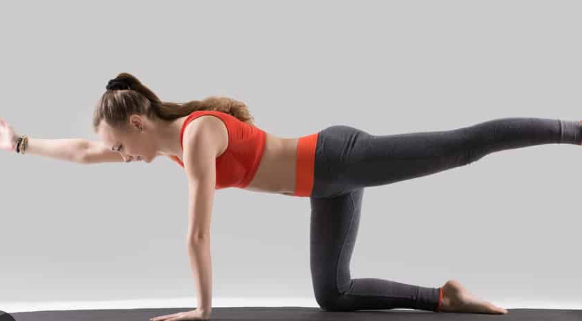Dr. Jason Pirozzolo on Postural Alignment and Correction: Exercises to Improve Posture and Reduce Strain
Modern lifestyles often contribute to poor posture, leading to chronic pain, muscle imbalances, and increased strain on the spine. Whether you spend hours at a desk, looking at a smartphone, or standing for long periods, postural misalignment can take a toll on your body. Dr. Jason Pirozzolo, a leading expert in orthopedic and sports medicine, explains how proper postural alignment can enhance overall health and prevent long-term musculoskeletal issues.
Why Postural Alignment Matters
Poor posture doesn’t just affect how you look—it impacts joint health, muscle function, and overall well-being. Dr. Jason Pirozzolo explains, “When posture is poor, the body compensates by overusing certain muscles and underutilizing others. Over time, this leads to muscle fatigue, stiffness, and pain in the neck, shoulders, and lower back.”
A misaligned posture can cause:
- Chronic neck and back pain
- Increased risk of joint degeneration
- Decreased lung capacity due to poor chest expansion
- Poor circulation from compressed blood vessels
- Tension headaches caused by forward head posture
How to Assess Your Posture
Before correcting posture, it’s essential to identify postural misalignments. Dr. Jason Pirozzolo suggests a simple wall test:
- Stand with your back against a wall with your heels, hips, shoulder blades, and head touching the surface.
- If you struggle to keep your head against the wall, it may indicate forward head posture.
- If your lower back excessively arches away from the wall, lumbar misalignment may be present.
“Postural assessments can help determine where corrections are needed,” says Dr. Pirozzolo. “With targeted exercises and ergonomic adjustments, patients can restore balance and relieve strain on their spine.”
Key Exercises to Improve Posture and Reduce Strain
Strengthening and stretching the right muscles can significantly correct posture. Dr. Jason Pirozzolo outlines the most effective exercises.
1. Chin Tucks for Forward Head Posture
Excessive screen time often causes forward head posture, straining the neck.
How to Perform:
- Sit or stand tall.
- Slowly tuck your chin in toward your neck, like making a double chin.
- Hold for 5 seconds and repeat 10 times.
“Chin tucks help realign the cervical spine and strengthen deep neck flexor muscles,” explains Dr. Pirozzolo.
2. Shoulder Blade Squeezes for Rounded Shoulders
Sitting at a desk for long hours encourages rounded shoulders, leading to upper back tightness.
How to Perform:
- Sit upright with your arms at your sides.
- Squeeze your shoulder blades together, keeping your chest open.
- Hold for 5 seconds, then relax.
- Repeat 10 times.
“This simple movement counteracts the slouching that weakens the upper back,” says Dr. Pirozzolo.
3. Wall Angels for Upper Back Strength
Strengthening the thoracic spine improves postural endurance.
How to Perform:
- Stand against a wall with your head, shoulders, and lower back touching.
- Raise your arms like a goalpost and slowly lift them overhead.
- Lower them back to the start and repeat 10 times.
“Wall angels improve mobility and strengthen postural muscles,” notes Dr. Pirozzolo.
4. Pelvic Tilts for Lower Back Alignment
Many individuals have an anterior pelvic tilt, which increases lower back pain.
How to Perform:
- Lie on your back with knees bent and feet flat.
- Flatten your lower back against the floor by engaging your core.
- Hold for 5 seconds and repeat 10 times.
“This exercise promotes core engagement and neutral spinal alignment,” says Dr. Pirozzolo.
5. Standing Posture Reset
Practicing proper standing posture helps integrate changes into daily life.
How to Perform:
- Stand with feet hip-width apart.
- Engage your core and keep shoulders relaxed.
- Keep your chin slightly tucked and weight evenly distributed.
“Practicing correct posture throughout the day reinforces long-term improvements,” emphasizes Dr. Pirozzolo.
Ergonomic Adjustments to Support Good Posture
Besides exercises, workspace and lifestyle modifications reduce postural strain.
1. Desk Ergonomics for Office Workers
- Raise monitors to eye level to prevent forward head posture.
- Use a chair with lumbar support to maintain spinal alignment.
- Keep feet flat on the ground and knees at a 90-degree angle.
2. Smartphone Use: Avoiding “Text Neck”
- Hold your phone at eye level instead of looking down.
- Take frequent breaks from screens.
- Perform neck mobility exercises to counteract strain.
3. Sleeping Position for Spinal Alignment
- Use a pillow that supports neck alignment.
- Avoid stomach sleeping, which strains the lumbar spine.
- Sleep with a pillow between knees for hip and spine balance.
“Simple adjustments reduce daily strain and support a healthy posture,” says Dr. Pirozzolo.
Final Thoughts
Poor posture isn’t just about appearance—it affects joint health, breathing, circulation, and long-term well-being. With targeted exercises and ergonomic improvements, postural issues can be corrected before they lead to chronic pain.
Dr. Jason Pirozzolo encourages individuals to be proactive about postural health. “Consistent practice of alignment techniques leads to better movement, reduced pain, and improved overall function.”
For expert advice on sports and orthopedic injuries, recovery strategies, and cutting-edge treatments, follow Dr. Jason Pirozzolo for insights into the latest developments in sports medicine and orthopedic medicine. You may also visit a Key West orthopedic clinic for more information.

